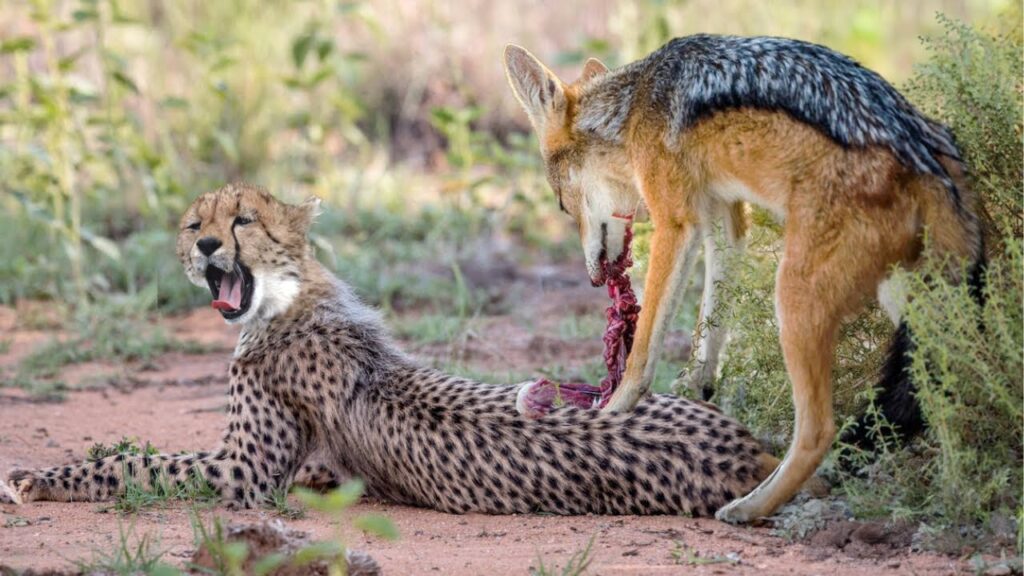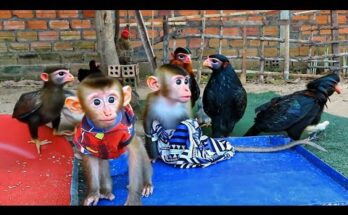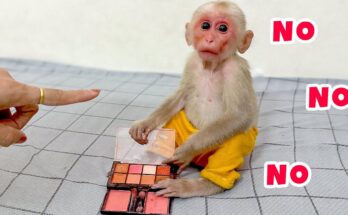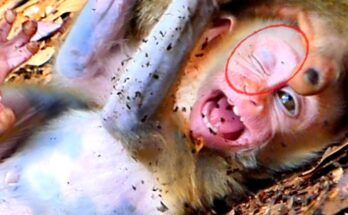
The African savannah, a place of staggering beauty and harsh survival, offers a front-row seat to nature’s most dramatic encounters. In this vast landscape of golden grasses, acacia trees, and shimmering heat waves, life is a constant contest between predator and prey, survival and extinction. Among these riveting dramas is one of the most poignant and primal conflicts in the animal kingdom: the dangerous encounter between a lone jackal and the vulnerable cubs of a cheetah.
The cheetah, known as the fastest land animal, is built for speed and agility. Adults can accelerate from 0 to 60 mph in just a few seconds. However, despite their incredible prowess, cheetahs are among the most vulnerable of Africa’s big cats, particularly when it comes to the survival of their young. A female cheetah raises her cubs alone and must constantly balance hunting to feed them while keeping them safe from numerous threats.
Cheetah cubs are born blind, fragile, and completely helpless. For the first few weeks of life, they remain hidden in tall grass or thick vegetation while the mother hunts. Even after they open their eyes and begin to crawl, the cubs remain defenseless and easy prey. Their chances of survival in the wild are slim — studies suggest that up to 90% of cheetah cubs die before reaching independence. The culprits? Lions, hyenas, eagles, and often overlooked but equally deadly: the cunning jackal.
Jackals, though not the most powerful predators, are highly intelligent, opportunistic, and relentless scavengers. About the size of a small dog, jackals travel in pairs or small family groups and have sharp senses and quick reflexes. Their ability to detect weakness or vulnerability makes them especially dangerous to young or injured animals. While they typically feed on rodents, insects, and carrion, a lone jackal won’t hesitate to target unattended cheetah cubs, especially if the mother is away.
The tension begins when a jackal catches the scent of cheetah cubs. Guided by its sharp nose, it slinks through the tall grass, ears perked and eyes scanning. The mother cheetah may be out hunting or simply distracted by another predator nearby. The jackal moves in cautiously, knowing that a confrontation with the mother could be fatal. But the reward—a nutritious, easy meal—drives it forward.
For the cheetah cubs, the danger is imminent. If they’re old enough, they may scatter or try to hide, using their naturally camouflaged fur to blend into the surroundings. However, most are too young to flee or even understand the threat. They emit soft, chirping calls that may alert the mother, but time is not on their side.
Should the mother cheetah sense the threat in time, what follows is a display of fierce maternal instinct. While cheetahs typically avoid conflict, a mother defending her cubs becomes a formidable opponent. With claws unsheathed and fangs bared, she may chase down the jackal at high speed, attempting to kill or at least drive it far from her cubs. If the jackal senses danger, it may retreat quickly, darting away into the brush.
But the outcome is not always in favor of the cheetah. If she arrives too late, the loss can be heartbreaking. A single jackal can kill a cub in seconds, and multiple jackals can decimate a litter before the mother returns. The aftermath of such encounters highlights the brutal reality of nature: survival is not guaranteed, even for apex predators.
This struggle also illustrates a broader ecological lesson. Each animal plays a role in the savannah’s complex web of life. The jackal is not evil; it’s simply acting on instinct, fulfilling its role in the food chain. By preying on the young of other species, jackals help control population balance and maintain a functioning ecosystem.
From a conservation perspective, these interactions underscore the challenges cheetahs face beyond human threats like poaching and habitat loss. Natural predation, especially on cubs, makes population recovery slow and fragile. Wildlife conservation efforts often focus on creating protected areas where mothers and cubs have a better chance of avoiding such dangers. In some reserves, scientists even monitor cheetah families to intervene if cubs are in grave danger from predators.
However, not all such interventions are welcomed. Many conservationists believe in letting nature take its course, emphasizing the importance of natural selection and the need for cheetahs to maintain their wild instincts. Interfering too much could result in animals that are less capable of surviving on their own.
The conflict between jackals and cheetah cubs also captivates wildlife filmmakers and photographers. These moments—steeped in suspense and raw emotion—offer rare insights into predator-prey dynamics and the maternal struggles of a solitary big cat. Capturing such a scene on camera requires patience, respect for nature, and a bit of luck. When documented, these interactions are both heart-wrenching and awe-inspiring, reminding us of the delicate balance that governs life in the wild.
In the end, the battle between a jackal and cheetah cubs is not just a physical clash; it’s symbolic of the broader struggle for survival in the natural world. It is a story of instincts colliding, of innocence threatened, and of a mother’s desperate attempt to shield her young from a ruthless world. Whether the cubs survive or fall victim to the jackal’s cunning, each encounter is a testament to the unforgiving beauty of nature—a place where existence is never taken for granted.


